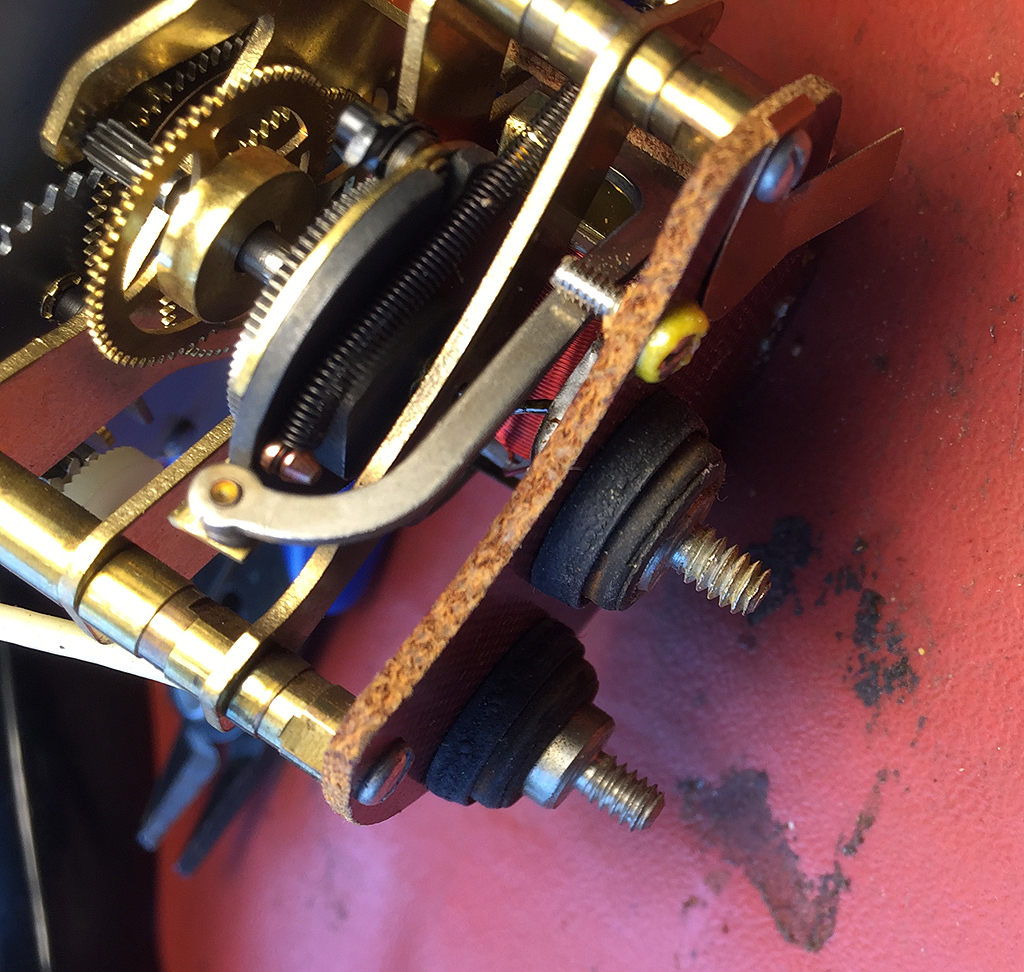|
Clocks
by
John Grady
After converting several F clocks to
quartz movements, I decided to look for a nice stock clock. I had
never seen one working right even after a clock guy “fixed “
one for me long ago for $150. It lasted a month. I found one in
perfect shape from a low mileage car, but it was not working at all.
I was thinking that once the balance wheel and second hand is
running, the rest of it is geared down so much that it should all
work. And being all brass, it should not rust.
These clocks are driven by a spring
which is wound by a solenoid. From the top of the solenoid box, an
arm protrudes with a tip and a point like the points in a
distributor. The arm is about an inch long. On the same vertical
plane as that point, you will see its mate attached to a cog and a
fairly complex gear assembly. This is the winding mechanism. As the
clock runs, the lower point, working up from that gear assembly,
moves closer and closer to the solenoid arm and point. When the
points touch, the solenoid activates and "blows" the lower
point to the furthest extent of its range, thereby winding the clock
for its next run. These cycles take 2-3 minutes; the only time the
clock uses 12V power is when the points close.
|
And here I found a problem present in
all of them.
I found that when the contacts close,
it violently throws the arm back to stretch the spring.
There is a
little brass flap (square thing above the two steel rivets) that is
supposed to limit the recoil of that long piece. After thousands of
cycles the flap bends at the foot crease. Once the flap bends, then
the arm swings way out instead of the 1/4” it should move and
it will never wind again. Even worse, the arm hits a brass post in
the clock and being live (electrically), it turns on the solenoid
coil and blows the fuse.
|

|
|
I bent brass flap back to the correct
position and the clock worked but within an hour the flap bent again.
Clearly the flap is too weak so I added a 1/4" long screw (4-40) as a backup
stop by drilling a tiny hole in the Phenolic as shown in the picture.
The clock has been running for 3 days keeping perfect time.
|

|
I went on line about inquire about
oil for the balance wheel. There is some dissension among the experts
but most agree to use lightest Mobil 1 or watch oil. A tiny drop on
the tip of a wire is all you need.
|
Looking now at the contacts, I was
surprised to see a very high but extremely short current pulse;
something like 4 amps for maybe 1/100 second. This is comparable to
ignition point current. The contact has no protection, which is
standard fare now. No small diodes were around at the time these
clocks were designed so I added an arc suppression diode ( 1 N4007 )
across the coil. This will extend contact life 25x! Polarity is
critical here, bar or cathode end of diode goes to inlet + 12 V.
Solder there, and the other end to the solder tab on the drive coil
end.
|

|
I really wish I had looked carefully
at this long ago instead of thinking they are always junk clocks
that never work. I was wrong. This clock is accurate within 30
seconds after 3 days. One more thing working well!
|